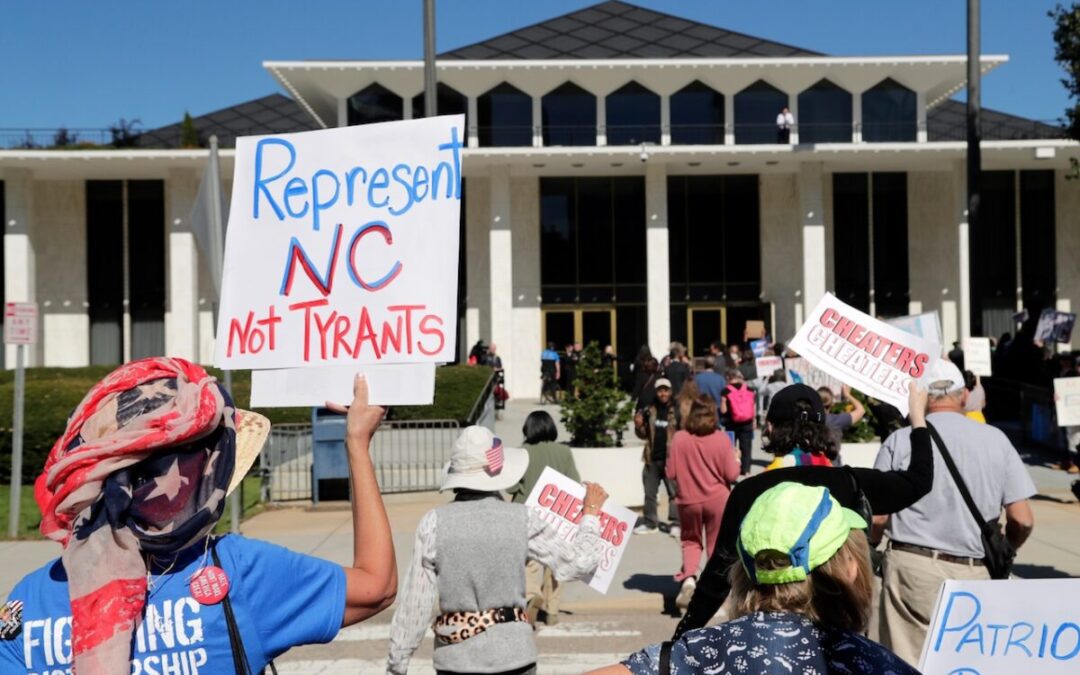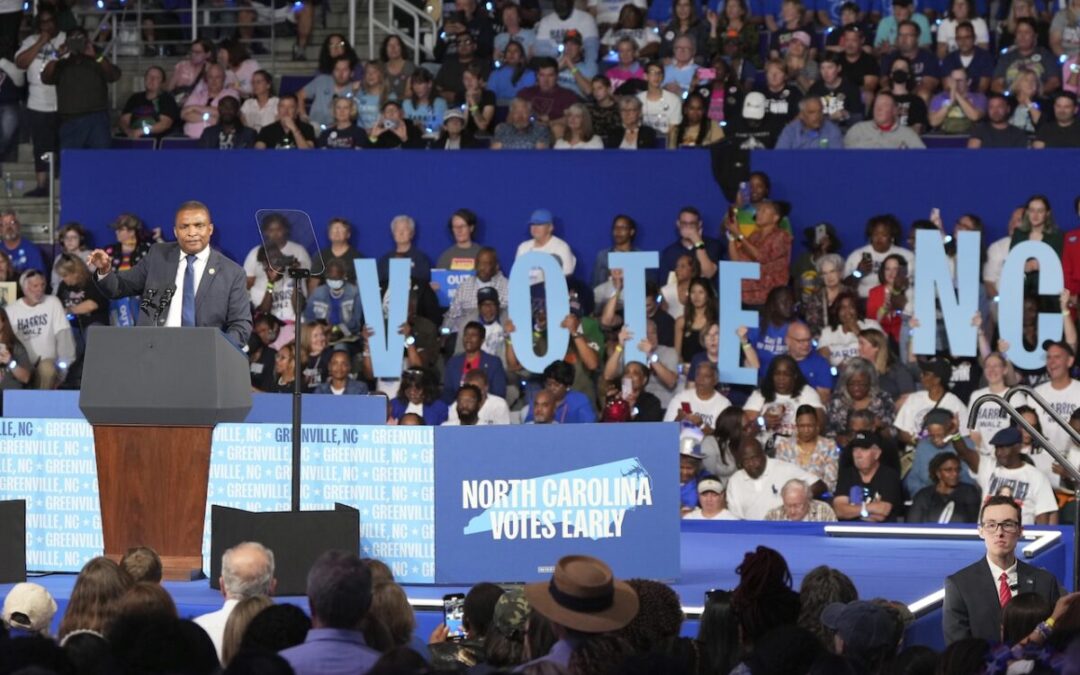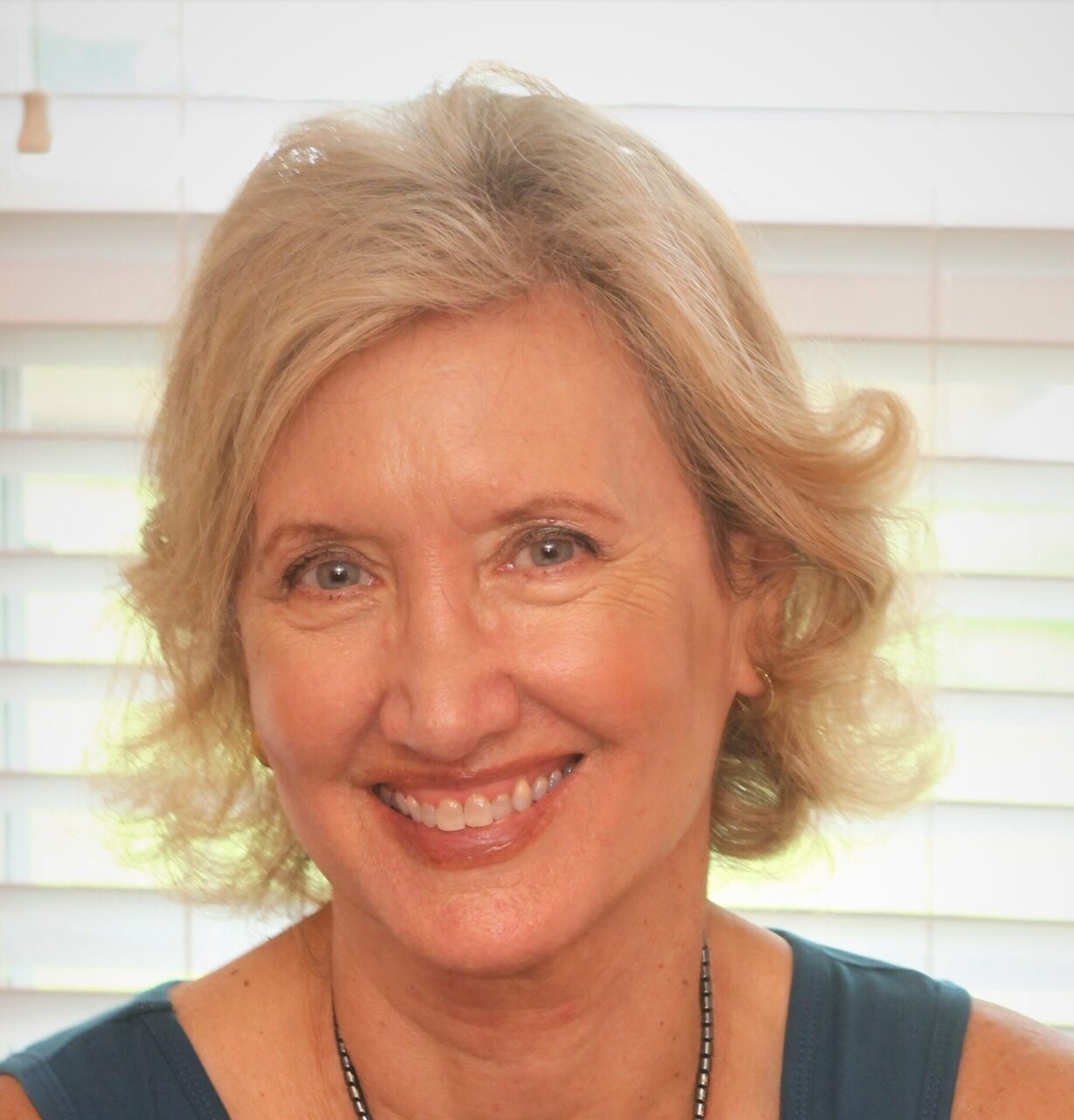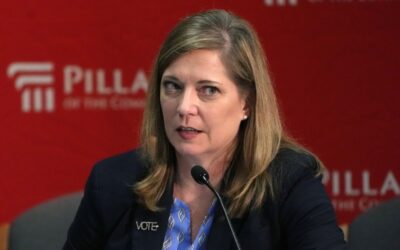
The Fall 2023 municipal election was a pretty good one for women candidates in my county, which is significant in a state given a grade of “D” on the 2023 Gender Parity Index. The index, which is compiled annually by RepresentWomen, measures the share of women holding elective office at all levels.
While we didn’t set out to help only female candidates to win, such free, nonpartisan candidate information projects like the one my colleague, Brian Massey, and I launched in Pitt County probably helped them. Female candidates were more likely than their male counterparts to participate in our request for information about them for our website. And women candidates who participated were much more likely to win.
One of those women was Marion Blackburn, who won reelection to her city council seat in Greenville, North Carolina, in 2023. Blackburn said she suspects female candidates were more likely than males to want their information on our website because “men may already see themselves as voters’ natural top choice.” That isn’t always the case for female candidates who, Blackburn wrote, “work harder to win their elections, as they must overcome the existing gender bias against them.”
News deserts and voter declines
Our project started five elections ago, after I got tired of not being able to find any information online about the candidates for town council where I lived. So a colleague and I started a website to provide nonpartisan information about all candidates for local office in Pitt County, population 172,000, where we live and teach journalism at East Carolina University. While the local newspaper typically provides candidate information about those in the county seat of Greenville, the paper’s readership is low, paywalls prevent nonsubscribers from reading its articles, and the far more numerous local candidates from all the towns in our county go ignored.
This is increasingly the case in rural areas all over the US, where research has documented broad, pervasive “news deserts.” Perhaps this is why very, very few people go to the polls for local elections in this country—fewer than 15% of all eligible voters, according to Who Votes for Mayor, a project studying voting and local elections at Portland State University in Oregon. The turnout for last fall’s local elections in North Carolina mirrored that 15% rate.
Participation in elections is especially low for minority and low-income voters, according to the Stanford Social Innovation Review. This shortfall leaves a small and unrepresentative share of the local population making these significant electoral decisions. Yet, if you think about it, what is there to base a vote on when the only information to go on are a few yard signs?
It was the low turnout and lack of information about candidates that prompted my colleague and I to start our candidate information project with the 2020 election. That year, we contacted all county and municipal candidates in Pitt County with the same set of questions about their backgrounds, priorities, and things like how they planned to involve constituents in the process of making decisions. We never asked about political party, nor did any candidates mention it. We also included candidates seeking to represent portions of our county in the state legislature. Opposing candidates who participated were shown side by side so that a voter could read about and compare them simultaneously. We’ve now done the same with four elections since then.
Female candidate participation
The Fall 2023 election included 61 local candidates in our county. Thirty of those were women, and 15 of the women participated in our website, www.Voter411ENC.org. Eleven of the 15 women won, all in contested races—a 73% success rate. The only four who participated but did not win were in races against other candidates who DID participate. The success rate of those who participated in our website was 10 percentage points higher than the success rate for female candidates overall in our county.
Of the 31 male candidates, 13 participated and just six won (one of them with no opposition)—a 46% success rate. Just like the women, of the seven participating male candidates who lost, all were also running against other website participants.
Overall, more than 1,600 unique users visited our website by election day. While not a lot, the total number of people in my county who voted was just over 12,000. So theoretically, our penetration rate topped 13% of all voters.
We don’t claim that our candidate website was the thing that made the difference. But for candidates who have less name recognition and money for signs and advertising, what we do helps to level the playing field. Those shortfalls are often the case for female and minority candidates. For example, one of the successful women candidates on our website last fall said she faced a real name recognition problem going into the election against an incumbent male candidate and a third challenger. Portia Willis was the only one in that city council race to respond to our numerous requests for information, and she won by almost 6 percentage points. She described campaigning at election sites during early-voting and encountering a voter holding a printout of candidate information from our website.
“She was an informed voter, she had her paperwork and she mentioned I was the only one who had a bio on the site, so automatically I would get her vote,” Willis said. “I think voters are wanting to see more effort and genuine concern from their elected officials and this certainly rang true for her.”
Marion Blackburn, another successful female candidate, reiterated that our website gives female candidates visibility and credibility. “When voters see them in an elevated platform, with a professional photograph demonstrating their ability to look like an elected leader, it allows them to see these women as vote-worthy. The platform helps voters to replace their stereotype of women, however deeply buried that stereotype is, with a new vision of women candidates as competent policy makers.”
Indeed, of the 35 races up for election last fall in my rural county, women won 19 of them—a success rate that topped 54%. That’s far higher than the 31% overall rate for women in elected municipal offices in my state in 2023, according to The Rutgers University Center for American Women and Politics, which tracked all cities and towns with populations over 10,000.
Voters also benefit
Not only could our website have helped women candidates, it also undoubtedly helped voters. Many of them told us they were so grateful for some real, easy-to-see candidate information in one place, even though it was self-reported. Such efforts could help with the lower voter turnout for minority groups and low-income citizens, something that can have a bearing on the provision of equitable government services and infrastructure spending, according to research in the journal, Local Government Studies.
Given the decimation of local journalism and the alarmingly low rate of voter participation in local elections, we’d love to see a national pro-democracy or pro-voting organization take up our effort and expand it. If a large group organized and paid for the promotional efforts needed for a single branded local candidate information effort, then voters would know where to go every fall to easily learn about local candidates. The male AND the female ones.

Congressman Don Davis files for reelection in a district Republicans stacked against him
A federal court recently approved a new 2026 election map intended to make it impossible for Davis, the incumbent Democrat, to win. But that...

Election Night was a bad night for NC Republican incumbents
NC Democrats flipped Republican mayoral offices and several seats on city councils on Tuesday, but what does that mean for the next election? Here...

NC Republicans release electoral map that would push Democrat Don Davis out of Congress
Republican leaders in the General Assembly say they will vote on a new congressional map next week that removes US Rep. Don Davis from his district...

NC Republicans release electoral map that would push Democrat Don Davis out of Congress
Republican leaders in the General Assembly say they will vote on a new congressional map next week that removes US Rep. Don Davis from his district...

Judge approves plan to settle Trump voter registration lawsuit with North Carolina
A federal judge on Monday approved a plan to settle a lawsuit filed by President Donald Trump’s Justice Department that demanded North Carolina...





